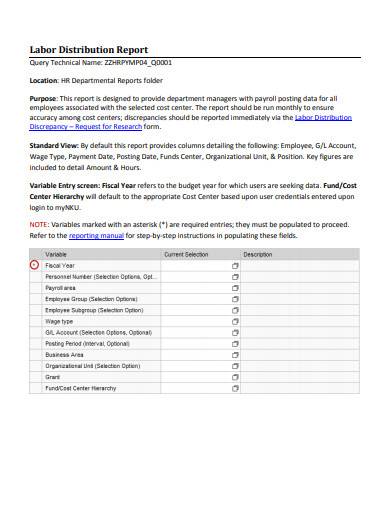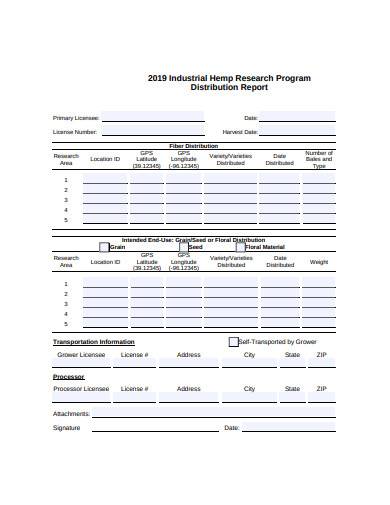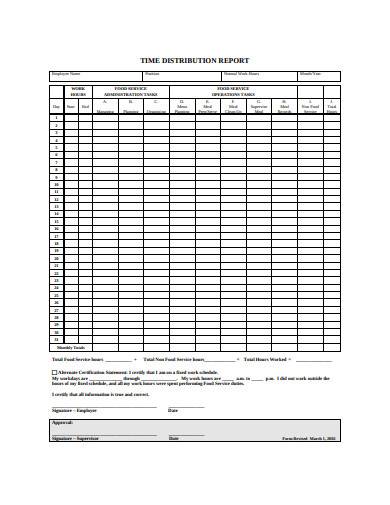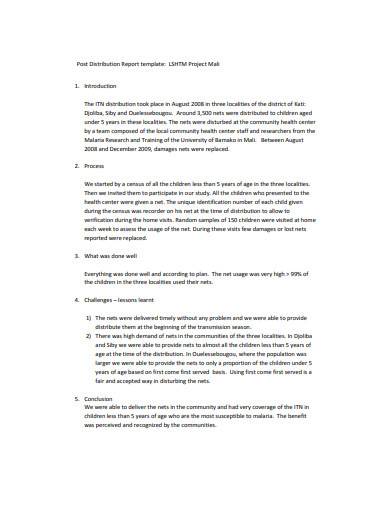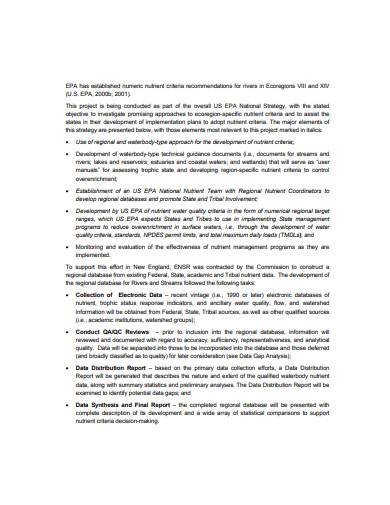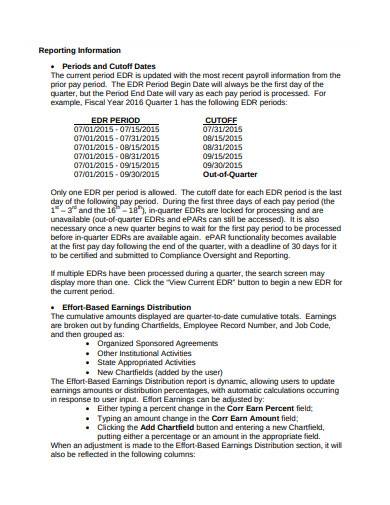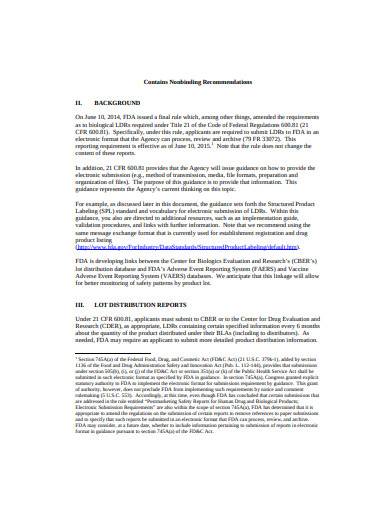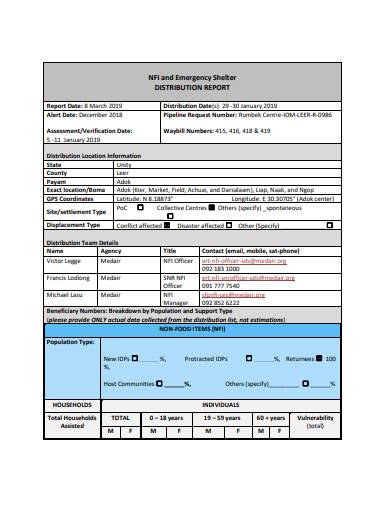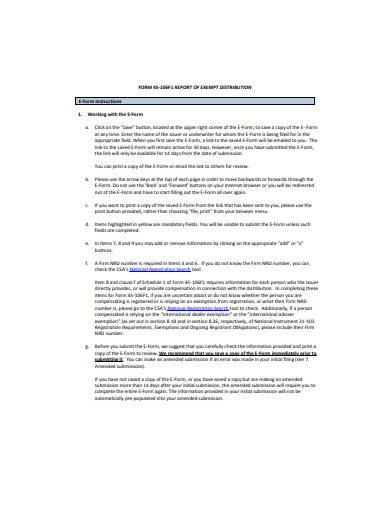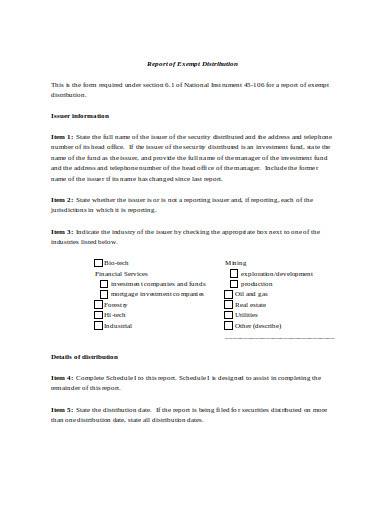In the beginning, you can manage to do all the tasks involved in the goal attainment of your business. However, if you aim to turn it into an empire, you should expect these processes to expand and become more complicated. At that stage, you will need to hire more people to accomplish these tasks while you focus on developing your business. The question is, how will you effectively distribute the necessary tasks to your people? By developing a labor distribution plan. To do it, you will also need a distribution report. Why? Learn it by reading further. We also included a set of distribution report examples that you can use for the different areas of your business.
What is a Distribution Report
To keep any businesses operating smoothly, you will need to involve the proper distribution of things, such as tasks and business documents. If you are running a retail business, you will also need a distribution plan to systematically deliver your products to the end-users, which are your customers. To implement this plan, you will need a distribution report.
A distribution report is a document that you can use to comprehensively document the information about a particular aspect following its distribution rules. In marketing, you can use a distribution report to record and manage the transactions and expenses involved to deliver the goods to the end-users. These transactions may involve activities, such as delivering the products from the manufacturers to its retailers and from the retailers to its customers. Other activities that you may include are providing payment contracts and summary reports, updating inventory reports, and processing a retail order sheet. Businesses utilize these reports for various purposes, such as sales analysis, monitoring, etc. Additionally, with the continuous advancements of technology, companies are starting to use advanced tools to enhance the distribution reporting in different business areas, such as batch files, Microsoft System Center Configuration Manager(MSCCM), and web-based dashboards and CRM or customer relationship management.
What are the Types of Product Distribution
We have mentioned earlier that distribution is a process that you can use in various business aspects, but in this section, let us focus on one of the most crucial parts of running a business, which is the product distribution. Product distribution is a process of distributing the manufacturers’ products to their customers, which are the end-users. This process may involve a chain of go-betweens or market intermediaries to deliver the products to the customers successfully. You will know more about it by reading the following types of product distribution.
1. Intensive Distribution
Among the three types of distribution, it is the most expensive. Why? It involves several go-betweens. Take Coca-Cola as an example. The company is making money by including retailers, distributors, and wholesalers in its distribution strategy. Many believe that this type of distribution is costly because of its massive intermediaries’ coverage.
2. Selective Distribution
Not all products will sell with an intensive distribution. To know which distribution type will fit your products, we recommend that you invest in market research. Selective distribution involves fewer distributors, which are suitable for businesses with a more specific target market.
3. Exclusive Distribution
Among the three distribution types, it is the least expensive since you are directly selling your products to the end-users. Mary Kay is an example of this distribution.
10+ Distribution Report Samples PDF | DOC
Now that you know what a distribution report is let’s take a look at the following distribution reports samples.
1. Labor Distribution Report Sample
2. Distribution Report Template
3. Time Distribution Report Sample
4. Post Distribution Report Template
5. Data Distribution Report Sample
6. Distribution Report Sample
7. Expense Distribution Report Template
8. Simple Distribution Report Example
9. Emergency Distribution Report Sample
10. Exempt Distribution Report Template
11. Distribution Report in DOC
How to Effectively Conduct a Product Distribution
We have discussed the different types of product distribution. In this article, you will learn the steps on how to perform the product distribution effectively. Having a strategic product distribution structure will complement well with your distribution report.
1. Know Your Market
Who will buy your products? In what way will they want to deliver the products to them? Those are the first few questions that you should ask yourself in distributing your products. To do it, you need to conduct a market analysis. Your goal in this step is to gather relevant information about your market and understand it.
2. Determine the Possible Go-Betweens
Assuming that you already know your market, the next thing that you need to do is to list down all the possible distributors, dealers, and other market intermediaries that can deliver your products to the end-users. Depending on the result of your market analysis, you will employ either of the two methods of distributing your products: indirect and direct selling. Through the direct sale, as per se, you will sell your products directly to the customer. Meanwhile, with indirect selling, you will distribute your products through market intermediaries.
3. Delve Deeper
The list of your potential distributors can be quite long. Thus, you have to cut it down as needed. Meaning, you have to determine the ones that you think will provide you with more profit. To do it, you have to conduct more research on these companies. Start by browsing online. Look for the characteristics of the business that you think will allow you to increase your sales if you sign a partnership agreement with them. You can also invite them over for a cup of coffee to get more information.
4. Choose a Distribution Channel
At this stage, you already know which distributors will fit to deliver your products to the customers. To finalize the process, determine the appropriate distribution channel that you think will give you more profit. You can also employ multiple distribution channels to maximize your sales.
Just like managing a computer network, you need to develop a distribution process for specific areas of your business. To execute it effectively, you will need a distribution report. For instance, by using a distribution report in the product distribution process, you can easily track and monitor the movements of your products and create a business decision based on the data you added in the report. Want to discover more essential reports that you can use in running your business? Start by reading our article about sample reports.
Related Posts
FREE 10+ Marketing Problem Statement Samples [ Strategy, Digital, Social Media ]
FREE 10+ Medical Problem Statement Samples [ Surgical, Nursing, Management ]
FREE 10+ Payoff Statement Samples in PDF | DOC
FREE 10+ Scholarship Statement of Purpose Samples in PDF | DOC
FREE 10+ Engineering Problem Statement Samples [ Software, Mechanical, Civil ]
FREE 30+ Information Statement Samples in PDF | MS Word
FREE 50+ Policy Statement Samples in MS Word | Google Docs | PDF
FREE 50+ Summary Statement Samples in PDF | MS Word
FREE 10+ Nursing School Personal Statement in PDF
FREE 9+ Mortgage Statement Samples and Templates in PDF
FREE 10+ Independent Subcontractor Statement Samples in MS Word | Google Docs | Apple Pages | PDF
FREE 10+ Trust Distribution Statement Samples in PDF
FREE 14+ Compliance Statement Samples & Templates in PDF | MS Word
FREE 10+ Extension Impact Statement Samples in PDF | DOC
FREE 10+ Bank Reconciliation Statement Samples and Templates in PDF | MS Word

